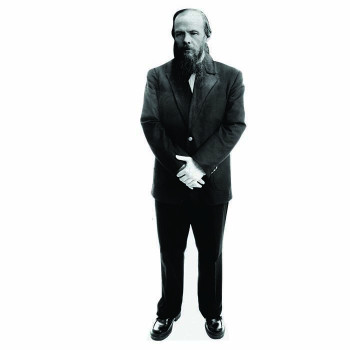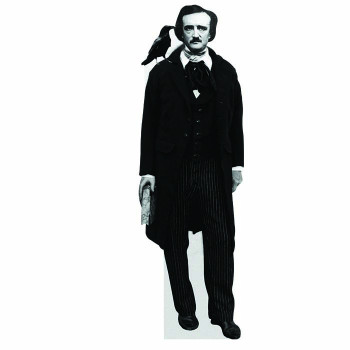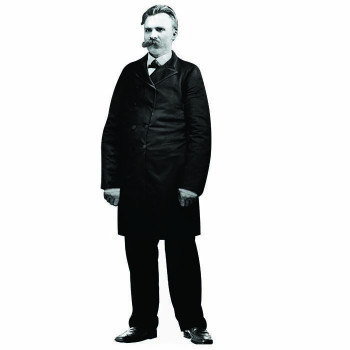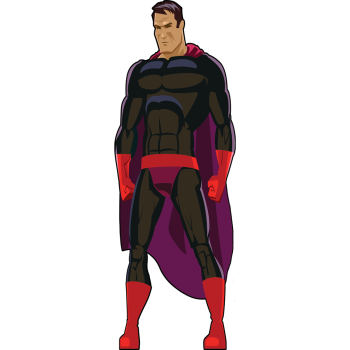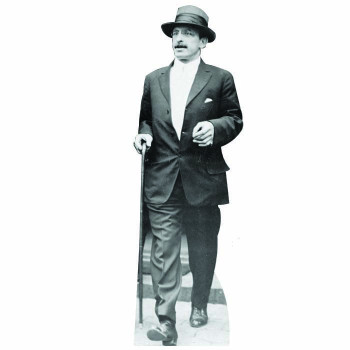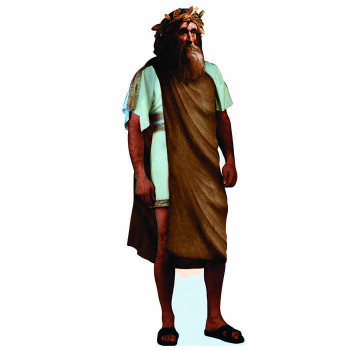BEETHOVEN CARDBOARD CUTOUT
-
$0.00
Available Options
Buy Instantly With
Introduction to Beethoven
Celebrate the legacy of one of the greatest composers in classical music history with our lifesize cardboard cutout of Ludwig van Beethoven. Perfect for musical displays, educational events, or as an inspiring addition to your home or office, this cutout captures the intense and passionate presence of Beethoven, reflecting his significant impact on music and culture.
Background of Beethoven
Ludwig van Beethoven was born on December 17, 1770, in Bonn, in the Electorate of Cologne, part of the Holy Roman Empire. His father, Johann van Beethoven, was a musician and recognized his son's prodigious talent early on. Beethoven's early education in music was rigorous and often harsh, under the tutelage of his father and other local musicians.
At the age of 21, Beethoven moved to Vienna, which was then the cultural and musical hub of Europe. He studied under Joseph Haydn and quickly gained a reputation as a virtuoso pianist and improviser. His early compositions, which include piano sonatas and string quartets, were well received, but it was his symphonies that would cement his legacy.
Beethoven's career can be divided into three periods: Early, Middle, and Late. The Early period reflects his mastery of the classical style established by Mozart and Haydn. His Middle period, also known as the "Heroic" period, saw the creation of groundbreaking works such as the "Eroica" Symphony (Symphony No. 3), the Fifth Symphony, and the "Appassionata" Sonata. These works showcased his innovative use of form, harmony, and emotional depth.
During the Middle period, Beethoven began to struggle with hearing loss, which eventually led to total deafness. Despite this profound challenge, his Late period produced some of his most profound and complex works, including the Ninth Symphony, the late string quartets, and the "Missa Solemnis." The Ninth Symphony, with its choral finale "Ode to Joy," remains one of the most celebrated pieces in the Western classical repertoire.
Beethoven's personal life was marked by turmoil and isolation. His relationships with family, friends, and patrons were often strained, and his struggle with deafness and health issues added to his challenges. Nevertheless, his determination and creative genius drove him to compose some of the most influential music in history.
Beethoven died on March 26, 1827, in Vienna, leaving behind a legacy that profoundly shaped the course of Western music.
Cultural Impact of Beethoven
Ludwig van Beethoven's impact on music and culture is monumental and enduring. His compositions bridged the classical and romantic eras, pushing the boundaries of musical form and expression. Beethoven's works are celebrated for their emotional depth, structural innovation, and technical mastery, influencing countless composers and musicians.
Beethoven's symphonies, particularly the Third, Fifth, Seventh, and Ninth, are cornerstones of the orchestral repertoire. His ability to convey a wide range of emotions and ideas through music revolutionized the symphonic form. The Ninth Symphony, with its incorporation of vocal soloists and choir in the final movement, set a precedent for future symphonic compositions and is often seen as a universal anthem for peace and unity.
In addition to his symphonies, Beethoven's piano sonatas, string quartets, and concertos are integral to the classical music canon. Works like the "Moonlight" Sonata, the "Pathetique" Sonata, and the late string quartets demonstrate his innovative use of harmony, texture, and form. These pieces continue to be essential repertoire for musicians and are studied and performed worldwide.
Beethoven's influence extends beyond the realm of classical music. His life and work have inspired literature, film, and visual arts, reflecting his status as a cultural icon. His struggle against adversity, particularly his triumph over deafness, has made him a symbol of perseverance and artistic integrity.
The "Ode to Joy" from the Ninth Symphony has been adopted as the anthem of the European Union, symbolizing unity and harmony. Beethoven's music is also frequently used in films, commercials, and popular culture, highlighting its timeless appeal and universal significance.
Beethoven's contributions to music theory and composition have had a lasting impact on the development of Western music. His exploration of musical form, thematic development, and harmonic innovation set new standards for composers and musicians. His legacy is preserved in the continued performance and study of his works, which remain central to the classical music tradition.
This cutout of Ludwig van Beethoven celebrates his remarkable contributions and enduring legacy as a master composer. It serves as a tribute to his musical genius, his impact on the development of classical music, and his significant role in shaping the cultural and intellectual heritage of the Western world.
| Size | |
| Width | |
| Height | 64 Inches |
- Brand: Historical Cutouts
- Product Code:H79150
- Availability:In Stock
LEARN MORE ABOUT OUR AVAILABLE MATERIALS

LIFE SIZE HISTORICAL CUTOUTS
We have been the leading historical based cutout supplier for nearly 10 years. We have worked with many schools, museums, and colleges across the country to provide stunning graphics from hsitory. Historical Cutouts are available in 3 materials and come contour cut with an easel to be self standing. Click below to learn more about each material and our cutout process.
Learn More
LIFE SIZE HISTORICAL WALL DECALS
All of our historical figures are available as a life size wall decals. Vinyl wall decal orders come ready to apply with squeegie and instructions. Having trouble? Check out our how to youtube video. Our graphics are printed on tear resistant PhotoTex Vinyl using our high definition 4 color plus white printing process.
Learn More
HISTORICAL ACRYLIC CUTOUTS
Desktop Legends are a smaller version of our life size cutotus printed on 3/16th" acrylic. All of our historical cutouts are also available as a desktop legend. These acrylic statuettes come in two sizes, 8" and 12". If you would like to learn more please click below.
Learn MoreRELATED PRODUCTS
-
Fyodor Dostoyevsky Cardboard Cutout
Introduction to Fyodor DostoyevskyCelebrate the legacy of one of the greatest novelists of all time ..
Uffizi Art Gallery Florence Italy Cardboard Cutout
By Cezar Suceveanu - Own work, CC BY-SA 4.0, 90x46 inch cardboard cutout of The Uffizi Gallery in Fl..
17th Century Hannibal Head Bust Cardboard Cutout
Introduction to HannibalStep into a world of ancient military strategy and legendary leadership with..
Edgar Allan Poe Cardboard Cutout
Introduction to Edgar Allan PoeCelebrate the legacy of one of America's most enigmatic and influenti..
Friedrich Nietzsche Cardboard Cutout
Introduction to Friedrich NietzscheCelebrate the legacy of one of the most provocative and influenti..
Underwear Over Pants Man Cardboard Cutout
Introduction to Underwear Over Pants ManImagine walking into a room and being greeted by the bold, c..
Red Curtain Theater Stage Stand In Cardboard Cutout
Introduction to Red Curtain Theater Stage Stand InStep onto the stage and feel the spotlight with ou..
Alexander Berkman Cardboard Cutout
Introduction to Alexander BerkmanCelebrate the legacy of one of the most influential anarchists and ..
Homer Cardboard Cutout
Introduction to HomerCelebrate the legacy of one of the greatest poets of ancient Greece with our li..
Stack of Books Cardboard Cutout
Introduction to Stack of BooksImagine adding a delightful touch of whimsy and elegance to your event..
Henri Rousseu Cardboard Cutout
Introduction to Henri RousseuStep into the vivid world of post-impressionist art with our lifesize c..
Leonardo Da Vinci Mona Lisa Painting Cardboard Cutout
Introduction to Mona Lisa Leonardo Da VinciStep into the world of Renaissance art and timeless beaut..



